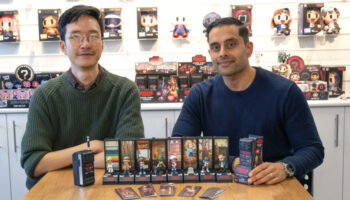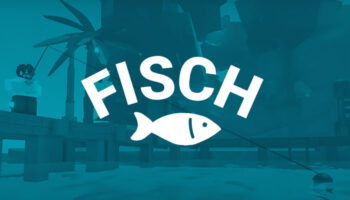Inventor Ceri Price reveals why now’s the right time for Tug!: The Tug-of-War Quiz Game

Ceri! Lovely to see you. For those that don’t know you, you self published your first game, Confident?, in 2018. People can read about that here… How’s it doing, though?
Hi Deej, great to catch-up! Confident? is doing well thanks. It’s still a top seller here in the UK, with more and more retailers stocking it after seeing its success and media coverage. It’s also now in ten versions and nine languages across the world – with more launching this year. We’ve launched a few booster question packs, too, and there’s lots of potential for new directions we can take it in.
You’ll get no argument from me. Great fun! More recently, you and your co-founder – Natalie Podd – launched your second game. What took so long?!
You’re not the first person to ask! Over the last few years we’ve focused most of our attention on growing Confident? as we thought we had a decent game… We wanted to capitalise on that. We’re a small team, and just working on Confident? took a lot of time.
That’s an excellent reason!
As you know, though, we’ve had lots of new game ideas that we’ve been developing and playtesting in the background. And we only wanted to release one if we felt it had a real differentiator. We were also wary that it’d be difficult to match the success of Confident? – we called it the “Difficult Second Game”, kind of like when bands struggle with their second album… But much less glamorous!
Ha! A lot of people will know exactly what you mean!
So anyway, it took a while to find the right idea, as well as time to do it justice. But when we came up with this particular idea, we felt we were onto something special; we had to go for it.
Well, I’ll nail my colours to the mast: I absolutely LOVE this… Love it! Tell us about it; what’s the big idea?
It’s called Tug! and it’s a team quiz game in a tug-of-war style. The big draw is that the game box unfolds into a mini tug-of-war arena, with a suspended rope and flag.

I’ll ask Adam to put an image in here so people can see how cute it looks…
Thank you!
How does it play?
It’s dead easy… Two teams compete by answering 50:50 trivia questions. If one team gets it right – and the other gets it wrong – the correct team tugs the rope in their direction! The first team to tug to their end wins. There’re a also few twists to increase the suspense as the game goes on.
Very simple rules; very cute scoring… It’s great! I’m curious, then, how did Tug! come about?
The whole concept started with a simple idea for a question format: five related 50:50 questions that get increasingly difficult. So one card might ask, “Are these celebrities over 6-foot?” and the five questions might be: 1. Tom Cruise. 2. Adele 3. Barack Obama 4. Venus Williams 5. Daniel Craig.
Okay… And if I was playing, then, I’d – what? Say: Tom Cruise, no. Adele, no. Barack Obama, yes… Venus Williams and Daniel Craig… Both yes!
Close! One wrong: Daniel Craig’s only five-foot ten.
Oh, bugger! Is he? That’s surprising!
So that question format was the initial idea. Originally, though, it was a solo game where players would just try to get all five right. We called it Survive 5. However, when we playtested it, we noticed there wasn’t much interaction between players. Like you just did, people tended to answer yes or no without much humour or discussion… So we decided to try it as a two team game instead.

I can see that… Not enough conflict on your own.
Right. But with two teams going head-to-head, the interaction and competitiveness soared! People were much more excited. There were more discussions, more laughs and more fun all round! At this point, we felt like we were onto something, but we felt we needed an elegant way to keep score. After testing a few different ways, we settled on a back-and-forth mechanic, with a counter moving between the teams as they get questions right or wrong. This made it very visual and easy to follow. We then just needed a theme and a good name to get us across the line!
This is great! The tug-of-war part is so good, I more or less presumed that came first. But that was the element you carried on looking for?
Yes. That was the last piece of the puzzle. Then, as soon as we made the link between the scoring system and tug of war, the ideas came thick and fast. Then one day Natalie came to my desk with a prototype she’d made. It was a long, thin game box with a shoelace suspended inside and a little flag on it. It was quite literally a mini tug of war! That’s when we thought: if we can get this manufactured, it could be awesome.
So Natalie’s prototype was super-cute – but it didn’t look easy to manufacture… And was it?
Well… There were a couple of tricky bits! First, the size of the box. We like making compact games, with minimal wasted space. We’re not fans of half-empty game boxes. But that was difficult with Tug! because we needed quite a long box to make the mini tug-of-war arena work.

Right.
Our solution was to make the Tug! box in a clam-shell style, so the box is one piece and it unfolds, and the game board is inside. The next tricky bit was getting the ropes suspended inside the game box – we needed holes in the box ends where the rope could run through and stay suspended… But it couldn’t be so tight that the box ends would lift when the rope was pulled. We had to find the right combination of rope thickness, hole size and box weight to get it right. There was a lot of prototyping!
Mmmmmm. That hadn’t crossed my mind… Would’ve been irritating.
The other tricky bit was finalising the scoring. The way the game works is if both teams get a question right or wrong, nothing happens… But if just one team is right, they tug the rope towards them. We wanted a game to last around 20 minutes, so we had to figure out how many spaces to put on the board, and how many spaces a correct answer is worth. After doing a lot of statistical modelling, we settled on six spaces on each side.
And what stops a game ending in stalemate, Ceri? Or at least a very protracted battle?
For that, we made it so that the answers are worth more as the game goes on. That has the added benefit of increasing the drama and suspense!
Alright… So! You said earlier that you were playtesting different things in the background. How many other ideas where in the running before settling on this one?
At the beginning of 2022, we were developing two or three different ideas that were close to being ready. We went with Tug! because – firstly – it’s a trivia game, which is familiar ground for us. And secondly, we felt it had the most complete combination of theme, design and gameplay.
And in the UK, you distribute with the good people of Asmodee… How did you pitch it to them?
We have a nice relationship with Asmodee and we catch-up semi regularly. We only showed them the game once we had all the design details nailed. We visited their office in Alton, and pitched a couple of games… It’s not like Dragons’ Den or anything; it’s very relaxed.

Sit down, play the game?
Exactly. We just had a catch up and a play – we find distributors tend to want the games to speak for themselves rather than us telling them how good they are. We showed them our less developed game first so we could finish on a high with Tug! – and they gave us their honest feedback. They loved it and started showing retailers straight away.
Fantastic! Any plans for game three?
Yes! Including the other game we showed Asmodee, which needed a bit more work, we now have two or three games we feel are really close in terms of gameplay and theme. We’re planning on launching at least one of them this year… And we’re likely to pick a non-trivia game aimed at a slightly different market, and at a different price point, to make sure we’re not overly self-competing.
And is there a timeline for that? Or is it under wraps?
It’s hard to know exactly when it’ll be… We sometimes find that getting a game from 95% to 100% is the hardest bit. We focus mostly on the development phase; playtesting and tweaking. You can’t always force that as Ideas needs time. Then bang! One day the gameplay comes together and we go full-blast to finalise all the designs and components. One of the advantages of being a small team is that we can make very quick decisions. So hopefully, we can get our ideas over the line and you’ll see something new from us like this year.
Fabulous. Well, listen; great job on this game, Ceri. Congratulations to you and Natalie – two of the loveliest people in the industry. Keep us posted on the new stuff, won’t you?
–
To stay in the loop with the latest news, interviews and features from the world of toy and game design, sign up to our weekly newsletter here

























